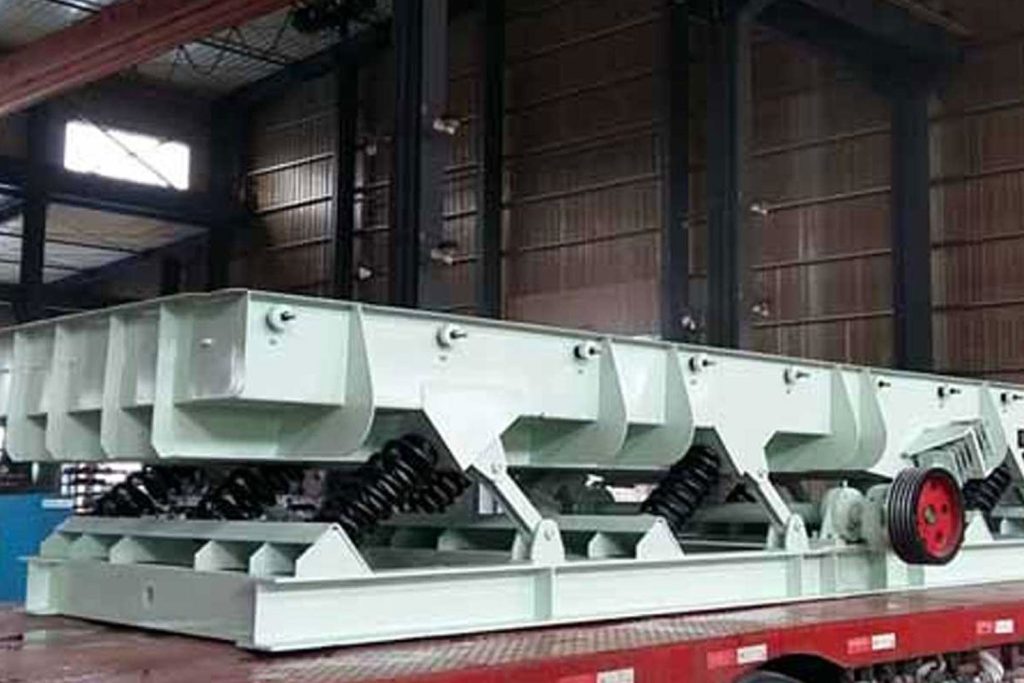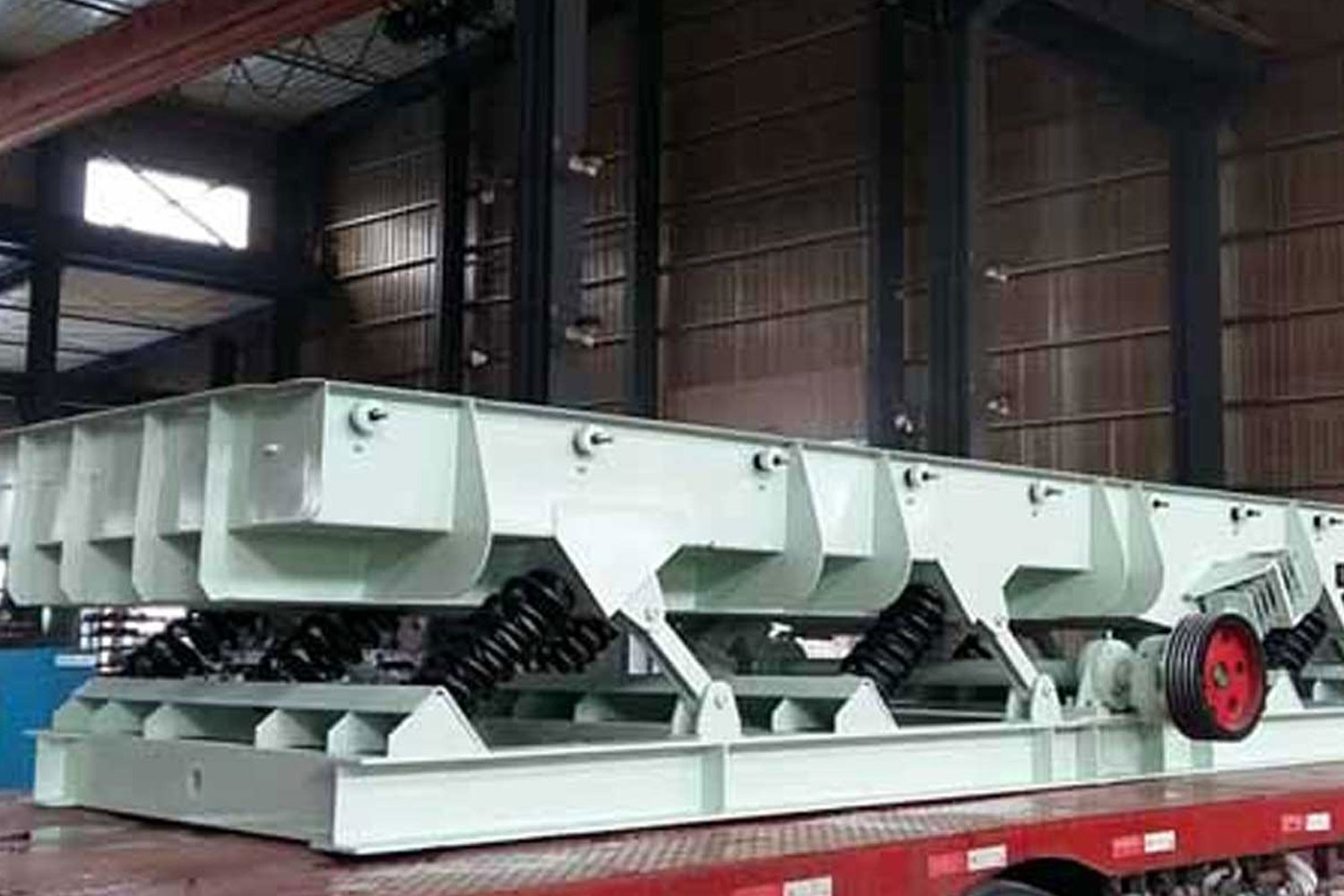Vibrating Conveyor VS. Belt Conveyor
With the development of automatic production operation requirements, the application scope of auxiliary equipment in ore production lines is becoming wider and wider. Vibrating feeders and belt conveyors are two of the most important connecting equipment. They have certain similarities, and can be matched with processing equipment according to the process needs to form a rhythmic assembly line. But they are very different in terms of use, structural composition, working principle, etc.
Let’s make a simple comparison of the vibrating feeder and belt conveyor from these three aspects.
Application
In the production process, the vibrating feeder can uniformly, regularly, and continuously transport block and granular materials from the storage silo to the receiving device, and conduct coarse screening of the materials. The belt conveyor is widely used to transport loose materials or pieces of goods. It has the characteristics of strong conveying capacity and long conveying distance, and can easily implement programmed control and automatic operation.
Structure and composition
The vibrating feeder is composed of a feeding trough, a vibration exciter, spring support, and a transmission device. The belt conveyor is mainly composed of a frame, conveyor belt, idler, roller, tensioning device, transmission device, and other components. Their structures are completely different, and you can compare them with pictures of vibrating feeders and belt conveyors on our main station.
Working principle
The vibrating feeder uses the rotation of the eccentric block in the vibrator to generate centrifugal force so that the screen box makes a forced continuous approximate circular motion. The material is continuously thrown on the inclined screen surface with the screen box, and the material is continuously and evenly sent to the material receiving port. The belt conveyor is driven by the motor through the reducer to drive the roller, and the conveyor belt is dragged by the friction between the driving roller and the conveyor belt to achieve the purpose of conveying materials.
Summary
Vibratory conveyors are superior to standard conveyor belts as they are quieter, more compact, more efficient, and much easier to clean and service. Vibratory conveyors and shaker conveyors are superior to standard conveyor belts in every conceivable way. They’re quieter, more compact, more efficient, and much easier to clean and service. With conveyors, the tray does not need to be replaced, unlike belts which need replacing every 6 months on average. The vibratory conveyors cost very little to own and run. Because they use far less energy, they’re variable speed and work on demand so that you can keep your production line running for much longer.
Further Reading
Vibrating conveyor

The vibrating conveyors are heavy-duty, highly durable systems that are configured with a broad range of capabilities for the most demanding applications.
The vibrating conveyor is also called a vibrating feeder. In the production process, the vibrating conveyor can uniformly, regularly, and continuously feed block and granular materials from the storage bin to the receiving device. In the sand and gravel production line, it can continuously and evenly feed the crushing machinery. And rough screening of materials, widely used in metallurgy, coal mines, mineral processing, building materials, chemicals, abrasives, and other industries crushing and screening combined equipment.
Belt conveyor
In addition to rubber belts, belt conveyors currently have conveyor belts of other materials (such as PVC, PU, Teflon, nylon belts, etc.). The belt conveyor is driven by the driving device to tighten the conveyor belt, and the middle frame and the idler form the conveyor belt as the traction and bearing member, so as to continuously transport the broken materials or finished products, mainly to prevent the belt from reversing when the belt conveyor is stopped and avoid the material due to Inverted and piled up to the tail of the machine to press the belt conveyor, causing an accident.
Abrasive material conveyed in a harsh environment can cause PVC/rubber belts to wear at an exponential rate. Hot material or other conveying equipment can cause belt degradation, which results in premature failures. The steel pans on a vibrating conveyor are manufactured to be wear-resistant and can readily handle hot, abrasive materials. Additionally, there is the option for liners to increase pan thickness in specific locations, which makes vibrating conveyors an excellent alternative.
